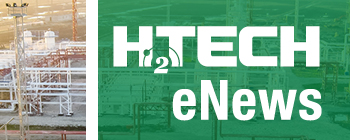News
Research reveals H2 adoption in European public transport faces grid and storage challenges
An overwhelming 93% of European public transport decisionmakers have expressed concerns about the capacity of their grid connection to fuel their current and future battery electric or H2-powered fleets as the sector transitions to greener fuel sources.
The research, commissioned by specialist engineering company IMI, surveyed 300 senior public transport professionals across the UK, Germany and Italy about the element’s adoption within the sector. With H2 production expanding rapidly across Europe, IMI’s research provides insight into a less-analyzed area – the priorities and opinions of decisionmakers on the barriers to adopting H2 at a wider scale.
The participating countries have all laid out emissions reduction plans for their bus networks as part of a wider strategy to achieve net zero in the sector. Despite grid capacity concerns, 89% of respondents from these markets said it would be effective for overcoming the limitations of battery-powered fleets, such as weight, range and grid strain.
“While many hard-to-abate industries have active research and development programs concerning H2’s use as a fuel, public transport is very well placed to reap the benefits of a potential transition,” said Andrea Pusceddu, Business Development Director for H2 at IMI. “But this by itself isn’t new, and we wanted to find out more. However, there is little publicly available research on the opinions of those with a stake in the success of H2, including public transport operators.
“This research aims to remedy that and has unearthed eye-catching statistics for those involved in the public transport sector and beyond. For example, 21% of respondents confirmed they had already purchased H2 vehicles, 61% said they would invest in the next two years, and almost three quarters said they expect to grow their H2 fleet over the next decade.
“This last finding is particularly interesting as a majority of respondents in each region polled shared this view, further underlining that these sentiments are held across the continent. However, only a quarter of respondents said they had access to permanent fueling infrastructure, demonstrating that clear barriers to adoption remain that need to be explored further. Given this situation, on-site generation through decentralized electrolysis is an effective solution to bridge this gap, eliminating the distance between production and end users while allowing transport networks to trial vehicles without fueling stations.”
Another challenge revealed by the research is the ability to store H2 safely – a key consideration for adoption at scale. A total of 76% of UK respondents saying it was a significant barrier to their deployment of H2-powered vehicles, following by Italy and Germany at 73% and 66% respectively. With H2-powered fleets expected to grow, and without large-scale production and distribution infrastructure in place, the report emphasizes the importance of decentralized storage and smaller, localized electrolyzers in working around these concerns without major intervention.
“Return on investment is important for any organization, but it takes on greater significance in the public sector, especially when projects are in receipt of funding,” Mr. Pusceddu concludes. “Operators of EVs and H2-powered vehicles not only need to prove H2’s important role in decarbonizing transport, but also that vehicles can be fueled without having to wait for large, centralized production to come online. This presents a difficult situation, especially with a lack of in-house expertise in the sector.
Indeed, this lack of familiarity can be seen in our research, where technical knowledge was the most-cited consideration by the report’s respondents when ordering new vehicles. Yet it does leaves open the opportunity for closer work with developers of smaller-scale electrolyzers, such as IMI. Working this way will minimize risk and allow transport managers to demonstrate the value of H2 transport – an important advantage given vehicles are already being ordered.”
The findings have been compiled into ‘The Road Ahead’, a new report from IMI exploring the role of decentralization for unlocking H2 as a fuel within public transport. It delves into how sector stakeholders view H2, and the challenges and steps required for wider adoption of the element as a fuel source for emerging fleets. The report goes on to analyze on-site electrolyzer technology’s potential impact on this ongoing rollout, with specific focus on Europe’s ailing electricity network.

